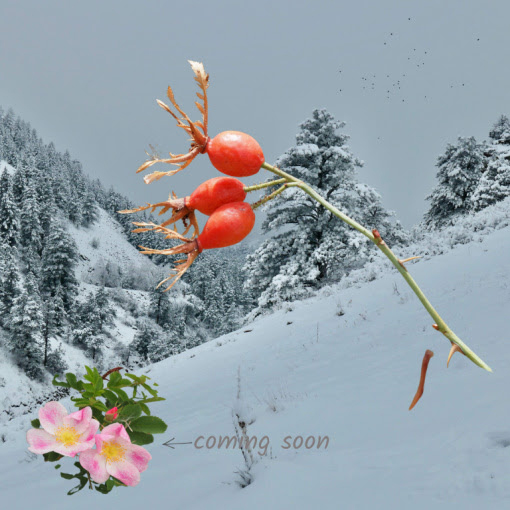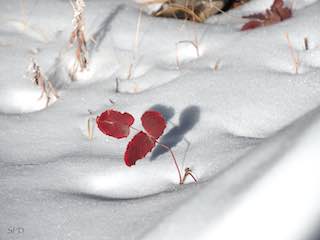
Mahonia repens, brilliant in the winter snow.
Plant people can go a little nuts in winter, it just can’t be denied. We know of course, that our beloved plants are just taking the necessary precautions to survive winter, and to be prepared for magnificent spring when she comes. But, well, we miss seeing them. We miss watching their changes – the unfolding drama of emergence, sexual fulfillment, seed set, and the finale of brilliant fall. Oh yes! Eventually, we are forced to agree with these words of the Bard’s:
“I, that did never weep, now melt with woe
That winter should cut off our spring-time so”
Henry Vl, Act 2, Scene 3
Of course King Richard was talking about battles not seasons, but the sentiment’s the same! Luckily, people in Colorado need not despair, we have native plants resplendent with color throughout the winter, even if they are on ‘pause.’
Evergreens come first to mind, covering our hillsides and mountains in many shades of green, sometimes complementing white snowdrifts borne on gracefully curving branches. The leaves (aka needles) of these cone-bearing trees – pines, spruces, firs, and junipers, are protected by their thin structure and waxy coating, able to withstand the harsh conditions of winter: cold, wind, and drought. They are excellent sources of cover and food for our wildlife. And the native plants are the reason we can enjoy these unique sources of color:
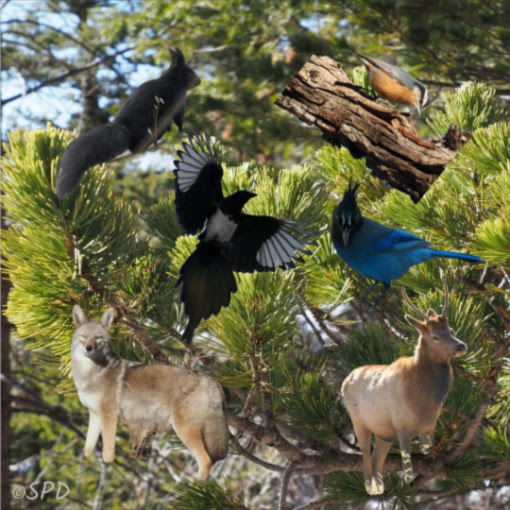
The colorful wildlife we enjoy are here because of the native plants, the ones they evolved with and depend on for food. Yep, even the meat-eaters, which feed on creatures grown fat on natives. Top left: Abert’s squirrel, red-breasted nuthatch. Middle: black-billed magpie, Stellar’s jay. Bottom: coyote, elk. All images ©SPD
Colorado’s native roses give us color all year round between their flowers and their rosy hips. The hips, or fruit, loaded with vitamins, have been used for centuries by indigenous people the world over in teas and other concoctions. Many birds and small mammals use the hips for winter food. We have three native roses in Colorado, and three introduced species that can now be found in wild places. The introduced species are escapees from gardens mainly in Boulder, a good reminder of why we need to be careful of what we plant at home. All these roses are somewhat promiscuous, and hybridization makes rose ID tricky sometimes. If you are interested in rose ID, nice photos and more information can be found at swcoloradowildflowers.
Up at Wild Basin in Rocky Mountain National Park, winter displays a panoply of color, rich in orange, red, and purple.
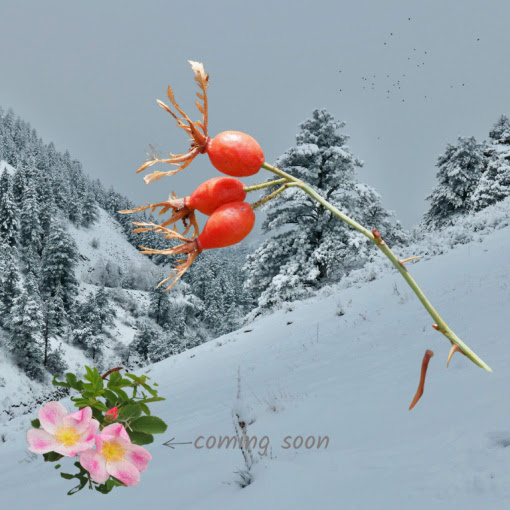
Native rose hips persist throughout winter.
Up at Wild Basin in Rocky Mountain National Park, winter displays a panoply of color, rich in orange, red, and purple.
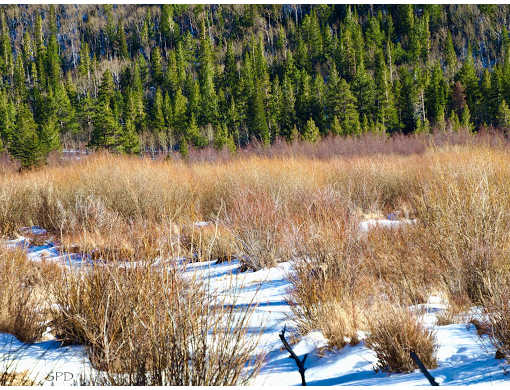
Shrubs, including lots of willow, at Wild Basin display a rich panoply of color.
Catkins, corymbs, bark, and lichens all contribute to color in winter. Of course you won’t. find lichens in the Flora of Colorado for the simple reason that they aren’t flora. Instead lichens reproduce by way of spores. These organisms are a partnership between a fungus, and an alga. Well that’s what we used to think anyway, until a guy from a Montana trailer park proved it’s not quite that simple. An entertaining and educational story about his discovery can be found in this article from The Atlantic.
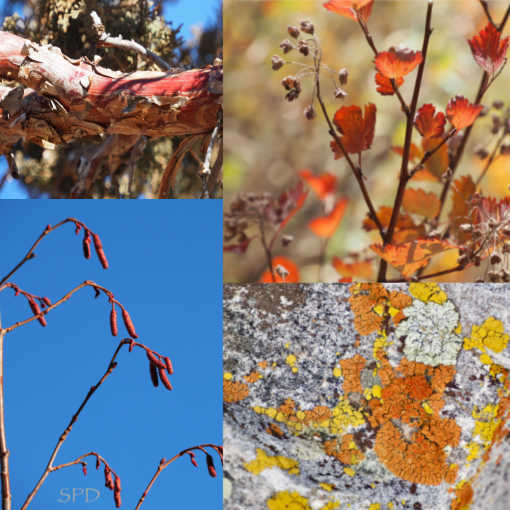
Top left: Rocky Mountain Juniper (Juniperous scopulorum); mountain ninebark, (Pysocarpus monogynous). Bottom right: thinleaf alder (Alnus incana, ssp. tenuifolia); lichens.
The loose fibrous bark of a healthy mature juniper is a part of a natural aging process and another by-product put to many uses by Native Americans. Fire torches, sandals and cradles are just a few examples. Mountain ninebark flowers are formed in a shape called a corymb. The ninebark in the collage was photographed at the end of January, still holding onto many leaves as well as the skeleton of its flower form. Nothing beats the blue of a Colorado sky, especially in winter when it sets off the deep red of catkins of thinleaf alder. The catkins also await fair spring, when they will morph into the plant’s male flowers and begin once more the fascinating cycle of regeneration. We love snow here in Colorado, but we don’t have to give up color in winter, thanks to our native plants!
Sue Dingwell
Media Committee
Colorado Native Plant Society

